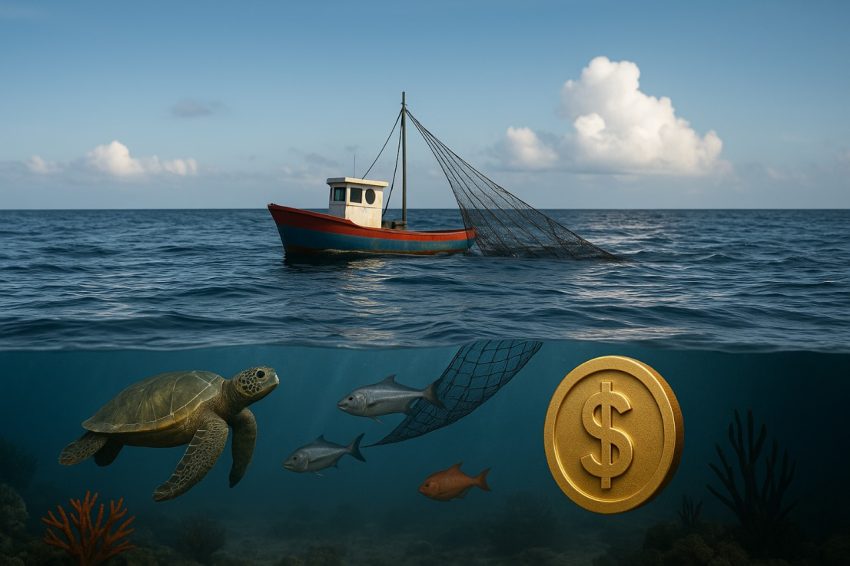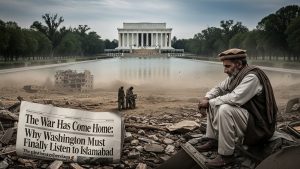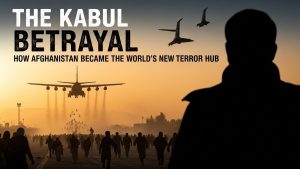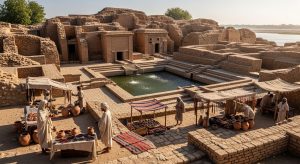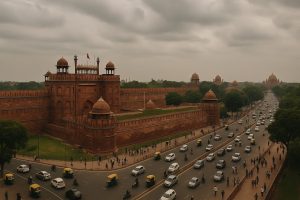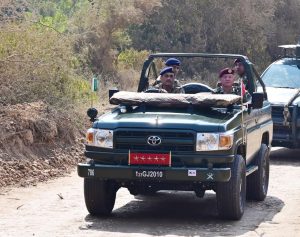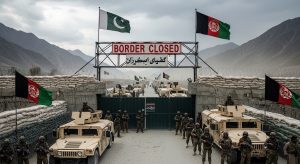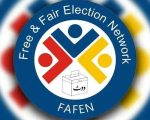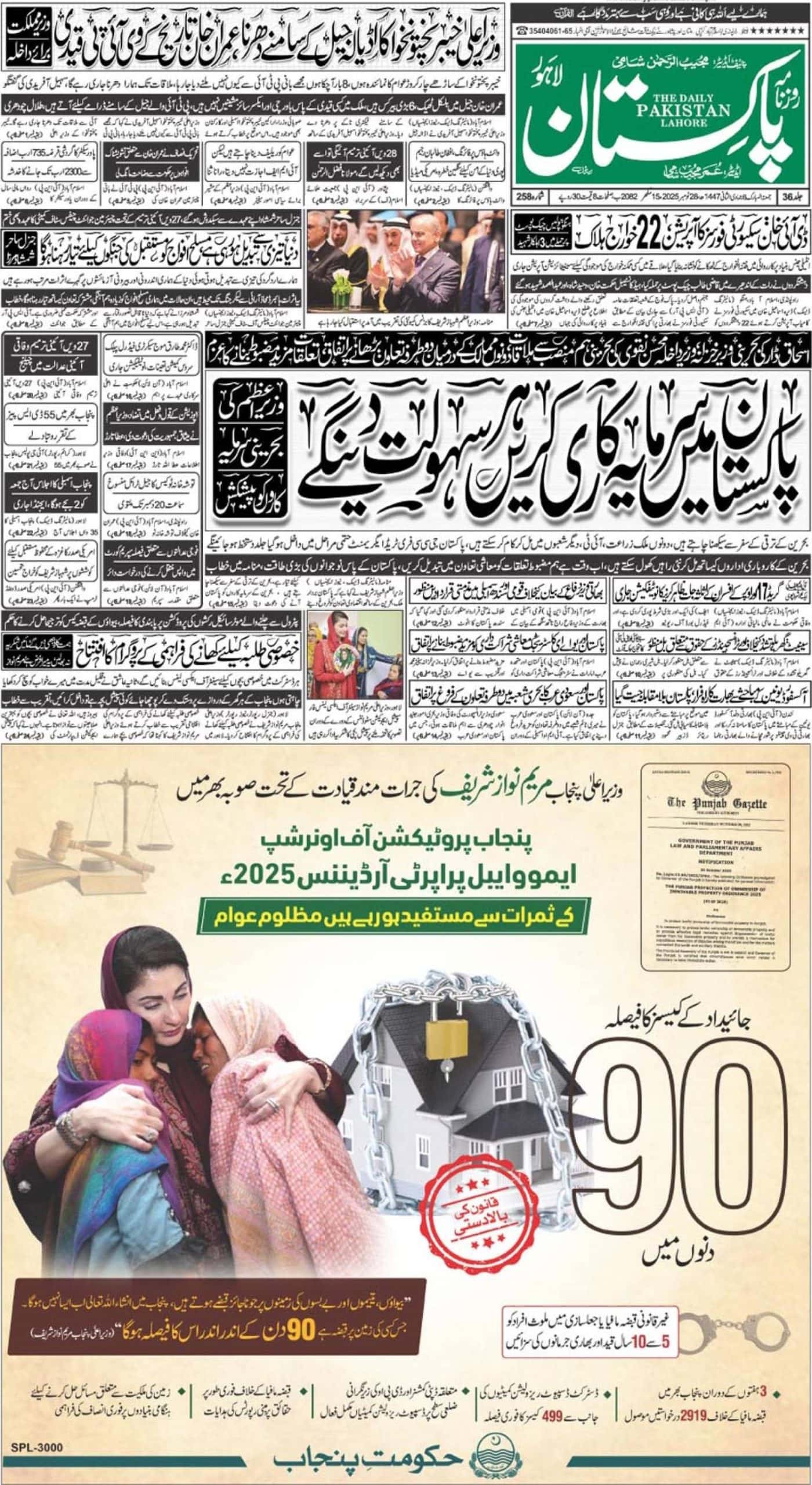Pakistan’s blue economy, meaning the sustainable use of its marine and coastal resources, remains one of the country’s most under-exploited economic frontiers. With over 1,000 kilometres of coastline, a 240,000 square kilometre Exclusive Economic Zone (EEZ), and an additional 50,000 square kilometre continental shelf extension approved by the United Nations in 2015, that is a resource base bigger than Khyber Pakhtunkhwa and Punjab combined. Yet today, the ocean sector contributes barely 0.4 % to the national Gross Domestic Product (GDP). That figure is as surprising as it is unacceptable, particularly when experts estimate that with a smart strategy and investment, this contribution could rise to 10–15% of GDP by 2035. In financial terms, shipping alone could generate US $ 8–10 billion annually, fisheries and aquaculture another US $ 17-18 billion, plus billions more from tourism, ship recycling, and coastal renewable energy projects, placing the blue economy’s potential well above US $ 40 billion per year.
These numbers are more than projections; they are plausible outcomes grounded in recent developments. In the financial year 2024–2025, Pakistan’s seafood exports surged to US$489.2 million, a 20.5% increase compared to the previous year. China and Thailand together purchased over US$291 million worth of seafood, highlighting the growing traction in global markets. Additionally, the United States recently renewed its authorisation for Pakistani seafood exports for another four years and granted its fisheries “comparable” status under the Marine Mammal Protection Act (MMPA), opening new opportunities for premium pricing and expanded market access. These shifts signal that Pakistan’s seafood industry is no longer a marginal player but is beginning to establish a foothold in competitive markets.
Policy ambition has historically lagged, but July 2025 marked a turning point. The Ministry of Maritime Affairs (MoMA) launched the National Fisheries and Aquaculture Policy (2025 – 2035), recognising that fisheries and aquaculture currently contribute less than 0.5 % of GDP but could unlock US$10 billion in value if restructured. The policy focuses on environmental stewardship, modern aquaculture technologies, institutional reforms, gender inclusion, and climate resilience. Significantly, it was developed in collaboration with the province and aligns with international standards, providing a blueprint for meaningful transformation.
The critical challenge now is to translate this policy into tangible investment and innovation. A significant opportunity lies in shifting from ‘catch and ship’ exports to value-added seafood processing. Pakistan must invest in cold-chain infrastructure, traceability systems, and processing clusters in Karachi, Gwadar, and Pasni. Such initiatives would not only double the value of exports within five years but also create thousands of jobs without depleting fish stocks. Experts argue that seafood exports can realistically cross the US$2.5 to 3 billion mark annually if these structural upgrades are prioritised.
Equally important are Pakistan’s ecological assets. The Indus Delta mangroves, among the largest in the world, are crucial for blue carbon storage, coastal protection, and fisheries productivity. Pakistan is one of the few countries where mangrove coverage has actually expanded in recent decades. These forests present an opportunity to launch blue-carbon credit projects that generate revenue while enhancing climate resilience. Similarly, the designation of Astola Island in 2017, Churna Island in 2024, and Miani Hor in 2025 as marine protected areas (MPAs) demonstrates a commitment to safeguarding biodiversity and developing eco-tourism. Managed properly, these areas could become income-generating hubs for local communities while restoring marine ecosystems.
On the industrial front, Pakistan’s shipbreaking sector at Gadani holds potential for revival under the Hong Kong Convention (HKC), which entered into force in June 2025, for the safe and environmentally sound recycling of ships. By upgrading yards to meet global compliance standards, Pakistan could re-emerge as a trusted hub for ship recycling, generating foreign exchange while improving labour safety and environmental outcomes.
Port development is another crucial dimension. Karachi Port Trust, Port Qasim Authority, and Gwadar Port Authority remain underutilised due to congestion, outdated infrastructure, and weak hinterland connectivity. However, significant progress has been made: AD Ports signed a 25-year concession at Karachi Gateway Terminal in February 2024, Hutchison Ports announced up to US$1 billion in investments in March 2025, and Gwadar International Airport officially opened for commercial flights in January 2025. These upgrades provide the foundation for modern logistics, transhipment, and tourism. If integrated with digitalisation and green-energy initiatives, Pakistan’s ports could become regional anchors for trade and shipping decarbonization.
Renewable energy offers another untapped avenue. Pakistan has already emerged as a solar heavyweight, with solar energy accounting for over 25% of electricity generation in 2025, placing it among fewer than 20 countries to reach this milestone. The next logical step is to pilot offshore wind and tidal projects along the Sindh-Balochistan corridor. Even a modest 200- to 300-megawatt offshore demonstrator could position Pakistan within the green hydrogen and maritime fuel supply chains that global ports are rapidly adopting.
To capture these opportunities, three high-leverage moves are essential. First, Pakistan should establish a live Blue-Economy Investment Pipeline that lists 50 to 70 bankable projects across fisheries, cold-chain systems, green ports, and eco-tourism, complete with financial and environmental data. Second, all incentives should be tied to compliance with international standards, ensuring that competitiveness is built on quality and sustainability. Third, MPAs must be scaled up and co-managed with local communities, creating a model where conservation and economic gains reinforce each other.
Pakistan’s blue economy is no longer just a slogan; it is a set of achievable investments that can deliver foreign exchange earnings, climate resilience, and livelihoods within the next five years. The assets already exist: a vast EEZ, rising seafood exports, expanding mangroves, modernising ports, and a new fisheries policy. What is needed is execution moving decisively from plans to projects, from potential to performance. If pursued with clarity and urgency, the blue economy could become Pakistan’s next big success story.
The author is a PhD scholar and associate researcher at the Centre of Research and Innovation in Maritime Affairs (CRIMA) at Minhaj University Lahore (MUL).

